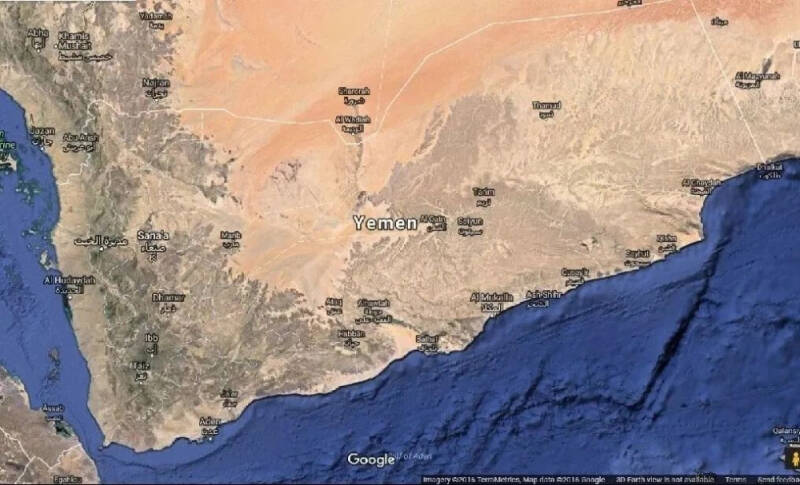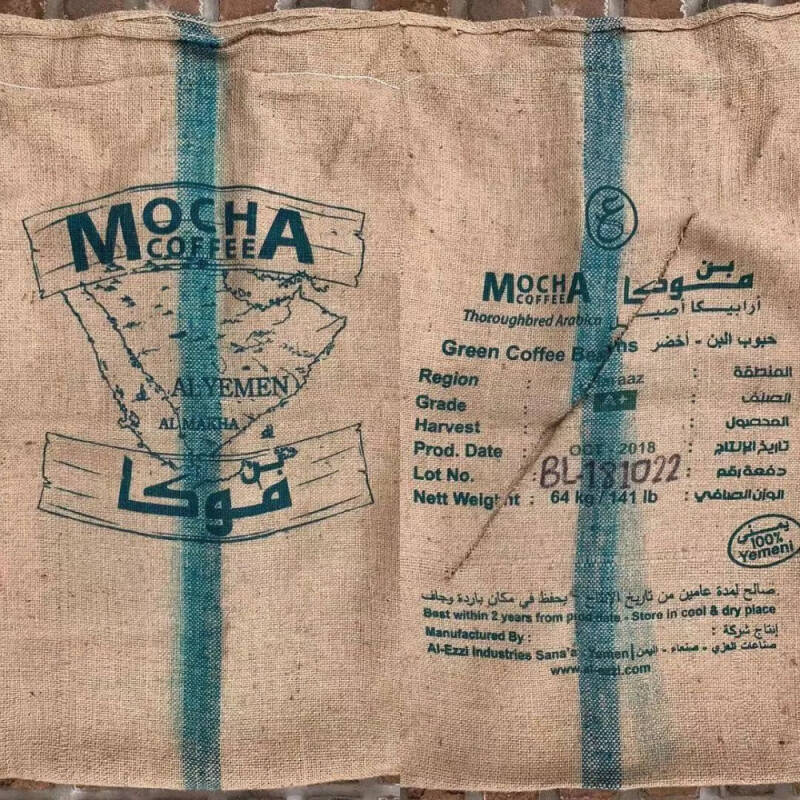How is the wild flavor of Yemeni mocha coffee formed? Ancient early sun treatment is what kind of treatment?
Without Yemen, would coffee still be recognized by the world as it is today and become a daily drink? We don't know, but we can have a superficial understanding of how the wild flavor of Yemeni coffee, which has been polarized by people, is formed.

Yemen Yemen is an Asian country on the other side of the Ethiopian Sea. It can become the birthplace of coffee thanks to its port city of Mocha. Qianjie coffee is often shared. For nearly 300 years since the 17th century, almost all coffee trade in the world has to be traded through the port of Mocha in Yemen, and coffee beans exported through the port of Mocha are usually printed with the words MOCHA to prove that they are regular coffee beans exported from Mocha!

The reason why people are so interested in Yemeni coffee is not only because of trade, but also because the coffee grown in Yemen has a very unique flavor! It is this unique flavor that opens the door to the world and creates the world-famous Yemeni mocha!
Did you know that apart from spreading coffee, Yemen is also the first country to grow coffee on a large scale as a crop. At first, Yemenis did not drink coffee as coffee. after harvesting the grown coffee fruit, they boiled it in water with meat and beans, and seasoned with cardamom or ginger. This drink is known locally as "Kahawa" and is very popular. It was not until 1450 that the Yemeni Islamists had a serious drink of coffee for the first time in order to be energetic when they prayed at night, and the result got out of hand. People felt the beauty of coffee, so they began to spread. For a while, the demand for coffee began to increase in Yemen, in order to meet their own needs, Yemenis began to grow coffee on a large scale on their own land.
The climate in Yemen is very dry, with only a short rainy season in a year. Therefore, there are Gobi and deserts everywhere, and coffee is basically grown on the slopes of these Gobi! The best annual rainfall for planting Arabica species is 1500-2000 mm, while the average annual rainfall in Yemen is only 400-750 mm. So we can see that the poor water in Yemen is not a little bit. As a result, the prolonged drought has prevented Yemeni farmers from using water-washing treatments that require a lot of water, and coffee cultivation in Yemen has not been able to grow as well as coffee grown in other producing areas. But as a result, the coffee produced in Yemen can create a world-famous wild flavor!
Full-bodied chocolate, blueberries, red wine tail, as well as wild mellow, this is people's unique impression of Yemeni coffee. Harald, one of the three major Ethiopian coffee producing areas on the other side of the Yemeni sea, produces coffee with a similar flavor. Therefore, at a time when the Yemeni mocha was very popular, people often questioned whether the mocha coffee produced in Yemen would be mixed with Harald coffee for sale.
The reason for the formation of wild flavor-"Guzao Sun" as Yemen is a dry coffee-producing area, the coffee used by farmers here can only be treated by the sun (at that time)! Then why does Qianjie Coffee say "Old Morning"? This is because the sun method used in Yemen at that time was an "old" version, which was very rough. Generally speaking, the sun treatment means that the coffee fruit is harvested after it is ripe and then brought back to the processing plant for processing. Yemenis are different. even if the coffee fruit is ripe crimson, they do not harvest it, but let it continue to be dried in the sun until it turns purple-black and falls off the tree. and pick it up from the ground.
This is something that many other producing areas cannot do! Because without the extremely dry climate in Yemen and long hours of sunshine, other producing areas would have been directly concocted in accordance with the law, which could easily lead to the direct rot of coffee fruits on the plants. Of course, this is not the only rough point. When the farmers pick up the dried coffee fruit, they will not spread the fruit on an elevated net bed that can be ventilated, like other producing areas, but directly on any ground. It can be the level of the doorway or the roof! At this time, these dried fruits will come into close contact with the dusty ground, producing a variety of unexpected flavors.
During the sun, Yemeni farmers will use wooden rakes to turn the fruits so that each fruit can be dried more evenly in about 20 days. At this time, the farmers will use simple stone grinding tools to shell and remove the meat from the fruit and take out the coffee beans. At this point, the sun is finished and the wild flavor will officially fall to the ground! Wild flavor: because the coffee beans absorbed a lot of peculiar smell during the harvest and treatment, it finally derived the taste of soil, tobacco and so on! And this is the reason for polarization. People who like it like it very much, and people who don't like it don't like it.
If put in today's cup test standards, such Yemeni coffee is more difficult to achieve boutique level, but in the first taste of coffee in various countries, it is a rare delicacy! Times have changed, today's Yemeni coffee processing is no longer "early", but more exquisite! It is no longer the only coffee producer to use full-sun treatment, as many novel coffee treatments have emerged in Yemen, such as the "alchemist treatment" of recent fires.
However, due to various factors (war, low production, etc.), very few Yemeni coffee beans can enter the Chinese market. But it doesn't matter! There is still so much time, Qianjie coffee, I believe that one day, everyone will be able to taste the delicious Yemeni coffee.
-END-
Front Street Cafe
No. 10 Baoqian street, Yandun road, Dongshankou, Yuexiu district, Guangzhou, Guangdong province
Important Notice :
前街咖啡 FrontStreet Coffee has moved to new addredd:
FrontStreet Coffee Address: 315,Donghua East Road,GuangZhou
Tel:020 38364473
- Prev

What's the difference between mocha and latte in Italian style? How is the traditional mocha made?
I think friends are no stranger to the word "mocha", but mocha coffee under the third or fourth wave of boutique coffee seems to be more and more difficult to find on the menu. Unfortunately, the chocolate sauce that has been under pressure for a long time has been found in Qianguan Street at the end of the year. Let Qianjie make a cup of mocha coffee and talk to you in detail.
- Next

Join in if you can't beat it, and the Starbucks cup cover has finally changed!
▲ Click follow | Daily boutique Coffee Culture Magazine Coffee Workshop has always been a joint event for various chain coffee brands. In addition to defining the perimeter, they generally use a specially designed "three-piece set" during the event, with Lucky as the representative, and limited cup covers can be seen in the joint activities with popular IP.
Related
- What effect does Italian American coffee with filter paper have? Will coffee taste better if it is put on filter paper at the bottom of the powder bowl?
- What is the color difference in coffee beans? What are the characteristics of honey processed coffee beans? Why are the anaerobically treated coffee beans uneven in color?
- How does novice Xiaobai quickly get started and make coffee? Newbies learn to make coffee by hand and share the specific steps and process process!
- Costa tea has a shelf life of 100 years?! Expert: Unable to verify
- It's a huge uproar! American milk addition was rejected by Manner employees?!
- Mocha pot coffee bean recommendations| How fine and how much powder should be used for grinding? What parameter ratios do I need to use to make milk with Mocha pot coffee?
- What are the characteristics of the world's top ten coffee beans treated with Costa Rica honey? How to make black honey kadura from Tarazhu Pilon Processing Plant taste good?
- How to make deep-roasted coffee? What grinding water temperature does authentic Jamaica Blue Mountain No. 1 coffee use to brew it well?
- Selected high-grade rose summer coffee flavor tasting guide Why Panama rose summer has the aroma of flowers and fruits
- What equipment does a novice Xiaobai need to buy to learn to make coffee? Filter cup electronic scale bean grinder manual flushing pot purchase guide

